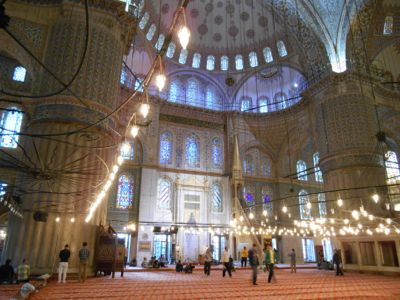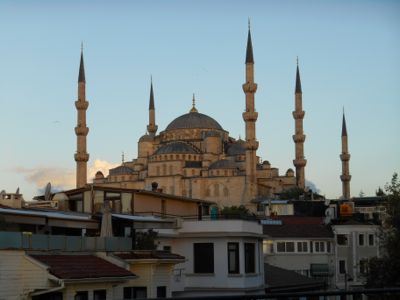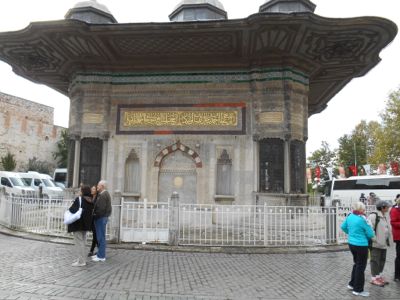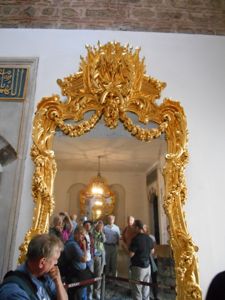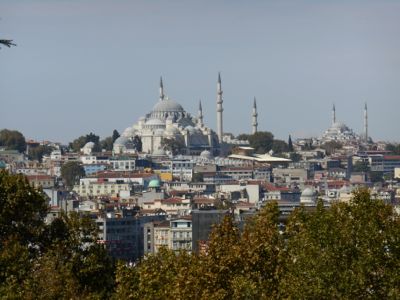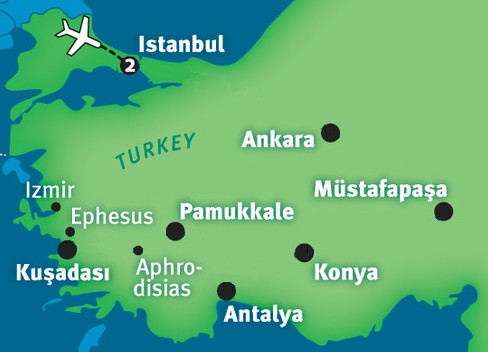Day 2 - Istanbul
This day, Mine had an appointment she had to keep, but her husband Mert (also a tour guide) stepped in and led us on a tour of Istanbul's highlights.
Blue Mosque
Our first stop was the Blue Mosque[*]. (It's really called the Sultan Ahmet Mosque, but all tourists call it the Blue Mosque.) After showing us the main points of the mosque, Mert took us into a quieter area and explained some of the principles of Islam to us and answered our questions. (While we were sitting there, a tourist walked by and took our picture, probably thinking we were students!) I came back again later that evening so I could look around some more when there weren't so many people.
Topkapi Palace
What I learned:
The Harem was not the Sultan's wives. It was the place they lived.
Next came a tour of Topkapi
Palace[*],
the home of many of the sultans.
We also joined a harem while we were there. Just kidding! We explored the harem[*], but we didn't join it.
Unlike we've come to believe, the word "harem" doesn't necessarily mean the sultan's wives or concubines.
It also means the place where they lived, where they were educated and protected, and from which they helped to run the empire.
Hagia Sophia
Hagia Sophia[*]
is a massive structure, originally built as a church,
then converted
What I learned:
Hagia Sophia is big enough to hold Notre Dame Cathedral under its dome.
to a mosque, and now serving as a museum.
It was built in the 6th century A.D. and for centuries it was the largest dome in existence.
It was the center of eastern (orthodox) Christianity until the 1400s, when the Ottoman Empire took over and converted it to a mosque.
In the early 1900s, it became a museum.
In many ways, Hagia Sophia represents the meeting of East and West, the same way Istanbul itself, and in fact Turkey as a whole, does.
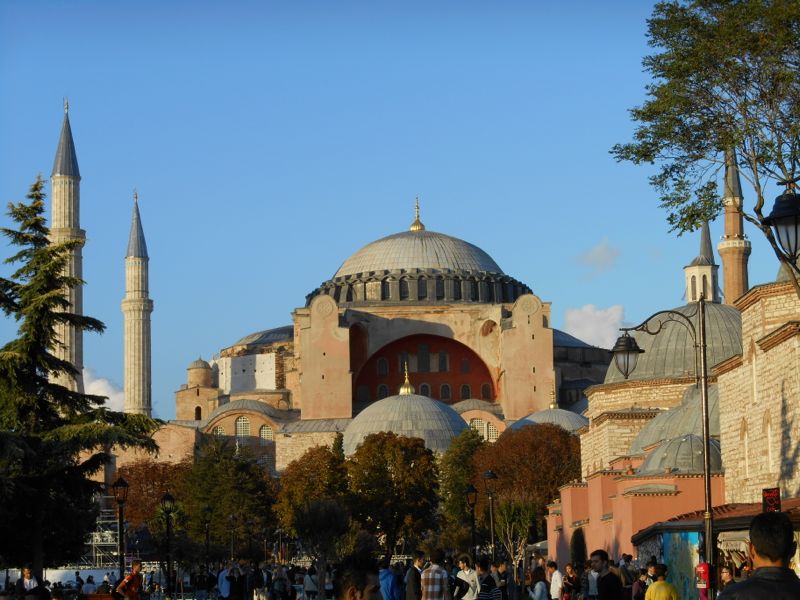
Odd fact:
A friend told me that the scaffolding was up when she visited Hagia Sophia 10 years ago.
When Hagia Sophia was converted to a mosque, several changes were made. Minarets were added and religious figures were plastered over. (These have since been at least partially restored.) The one pictured below has a real gold mosaic background. A small construction was also added to indicate the direction to Mecca. There is currently scaffolding covering a large portion of the main area.
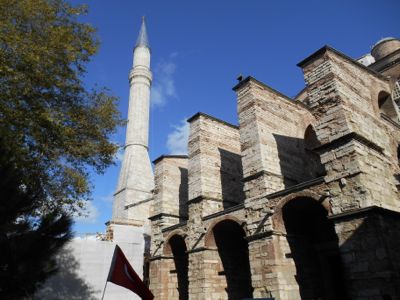
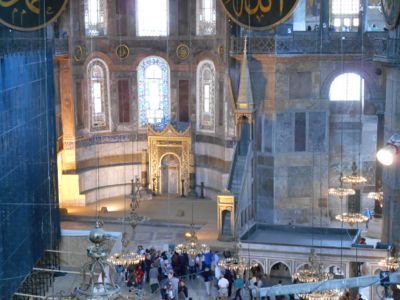
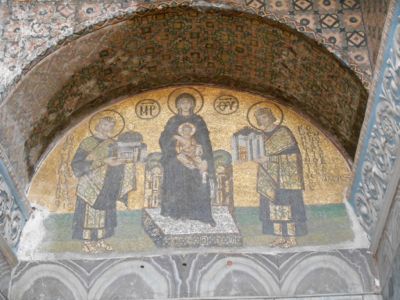
What I learned:
'Real saffron' is from Iran. Turkish saffron is much cheaper, but works better for coloring than for flavoring. Indian saffron is something else entirely.
Spice Market
I'm not much of a cook, so I didn't explore the spice market on my walking tour on my first day in Istanbul. After I got back to my hotel that night, there was a message from a friend who wanted me to buy "$20 worth of real saffron" for her. That gave me a goal when we visited again as a group. I asked for $20 worth and what I got was enough to half fill a small jar (the size of a small pill bottle), loosely packed. No wonder it's so expensive back home. I wrapped it carefully and treated it like gold!
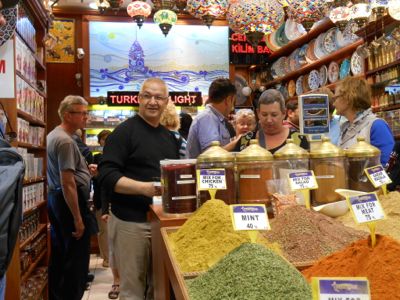
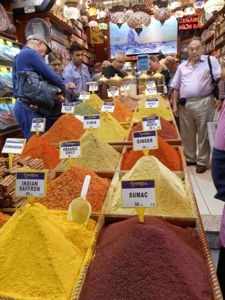
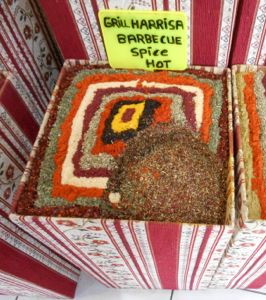
The picture on the right is actually from a spice store in Antalya. I love the way they display the spice mix. My guess is that they stir it up each night and recreate the design with fresh spices, but I don't know for sure. I didn't ask.
"sağol"
thanks

 Saffron is expensive!
Saffron is expensive!

